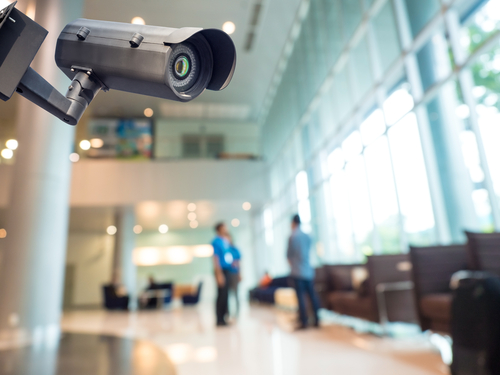Organizations are taking stock and settling into a new way of working after a period of uncertainty and change driven by the COVID-19 pandemic. 2022 brought new challenges to the physical security industry, such as product shortages and human resource issues. Despite these changing conditions, the industry has shown resilience and adaptability. Recently, Genetec gathered insights from over 3,700 physical security professionals from around the world to discuss some of the security strategies they have put in place as they begin 2023.

The report brought to light several key insights for physical security professionals as they navigate the changing industry landscape.
IT Is Playing A Larger Role in Physical Security
A decade ago, most physical security systems in larger organizations were managed by personnel in specialized security departments. However, the transition to network physical security systems has meant that Information Technology (IT) departments are taking greater responsibility for managing physical security systems as part of network and technology governance. IT survey respondents prioritized cybersecurity issues related to the management and deployment of physical security systems.
Cybersecurity Is Top of Mind
When asked about the challenges faced when managing employee and visitor safety, more than half of the organizations selected cybersecurity as their main challenge. This was particularly evident for organizations with over 100,000 employees, with 62.3% of them indicating that cybersecurity was their top challenge, compared to 52.1% for companies with under 100,000 employees.
The report also revealed that almost half of the organizations surveyed had activated an improved cybersecurity strategy in 2022, and more than a third of all respondents are looking to invest in cybersecurity-related tools in the next 12 months.
Use of Physical Security for Business Operations
Physical security systems are becoming strategic assets to cope with a variety of challenges that go beyond just mitigating risk and are now playing a much more significant role in organizations’ digital transformation. The trend to consider physical security solutions as more than just a cost associated with protecting people and assets will continue.
Video surveillance, in particular, offers a rich source of data. Organizations may already have sufficient video surveillance systems installed and can utilize existing data to fundamentally change business processes via the data gathered. Examples include monitoring customer queue lengths in retail organizations or decreasing traffic congestion levels in city centers by timing traffic light signals.
Physical Security Gets Unified
For many organizations, restrictions from the pandemic acted as a further catalyst to unify their video surveillance and access control systems as some end users needed to take this step to effectively manage the safe movement of occupants around their facilities. The increased demand for this approach may have caused some systems integrators to gain greater expertise and awareness of the benefits of unification, resulting in more recommendations to end users to consider this approach.
Most respondents (64%) reported that they run both video surveillance and access control in their physical security deployments. Of those, 77% indicated that their organization had implemented either integration between video surveillance and access control systems from different vendors, or a unified video surveillance and access control solution from one manufacturer.
The Future of Security Is Hybrid
Although the physical security industry is still lagging behind other industries in its adoption of the cloud, there are clear signs that the move in this direction will continue. All things point to hybrid-cloud deployments being the way forward for enterprises. From the survey, 54% of end user respondents indicated that their organization’s target vision for security deployment is a blend of on-premises and cloud-based solutions. A hybrid approach enables organizations to optimize their existing on-premises investments while leveraging cloud options to save cost, increase security and efficiency, and enable remote access to systems and sensors.
The full Genetec 2022 State of the Industry Report is available for download here.
Kyle Hurt is the Senior Director of Sales for Genetec in the United States. In this role, he is responsible for implementing sales plans to successfully achieve business objectives in the region while working closely with engineers, consultants, and clients to ensure a smooth customer journey.

